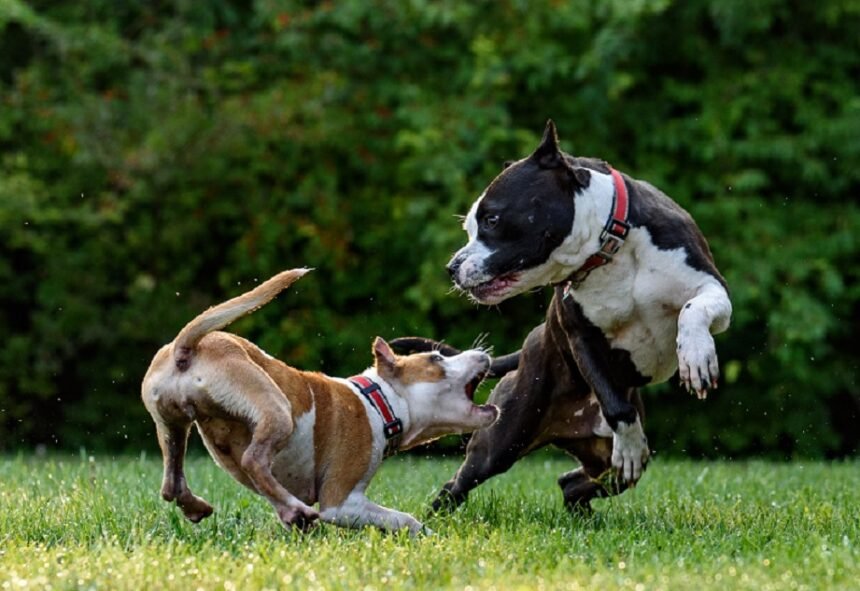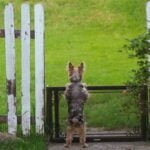Dog fights can be alarming and dangerous for pets and their owners. Understanding how to handle such situations safely is crucial for maintaining the well-being of everyone involved. In this article, we will explore practical strategies for breaking up dog fights and preventing them from occurring in the first place.
Before delving into prevention and intervention, it’s essential to grasp canine behavior cues that often lead to fights. Recognizing triggers and understanding body language can help anticipate and avert potential conflicts.
Preventing Dog Fights
Prevention is vital to avoiding dog fights altogether. Implementing effective leash management, avoiding situations that may provoke aggression, and investing in socialization and training can significantly reduce the likelihood of confrontations between dogs.
Dog fights can be traumatic experiences for both dogs and their owners. They can result in physical injuries, emotional distress, and even legal consequences. By focusing on prevention, owners can significantly reduce the risk of these situations, ensuring a happy and safe home for all pets involved.
- Effective Leash Management: Proper leash management is fundamental to preventing dog fights. When walking multiple dogs, ensure each dog is on a separate leash. This prevents entanglement and allows better control over individual behaviors. Always maintain a safe distance between dogs and be aware of their interactions with other animals during walks.
- Recognizing Potential Conflict Situations: Understanding situations that can lead to aggression is vital. Dogs may become territorial, possessive over resources, or react negatively to specific triggers. Avoid exposing dogs to scenarios that might trigger an attack, such as sharing high-value treats or toys without proper supervision.
- Supervised Playtime: Supervised play sessions are essential, especially when introducing new dogs to each other. Avoid leaving dogs unattended until their interactions have been observed and deemed safe. Interruptions can prevent misunderstandings and defuse escalating tensions.
- Provide Individual Spaces: Allotting individual spaces for each dog can minimize potential conflicts arising from territory disputes: separate feeding areas, resting spots, and toys to ensure dogs have personal space.
- Avoiding Food Aggression: Feeding time can be a trigger for fights, particularly when dogs feel the need to defend their food. Feed dogs separately and ensure they are accustomed to human presence during meal times. Gradually desensitize dogs to each other’s company while eating to reduce the likelihood of resource guarding.
Distraction Techniques
Distraction techniques leverage dogs’ natural curiosity and desire for positive stimuli. By diverting their focus away from the source of conflict, you can create a window of opportunity to intervene, allowing emotions to cool down and tensions to dissipate.
1. Use of Loud Noises
Loud, unexpected noises can startle dogs and shift their attention away from each other. Clapping your hands, using a whistle, or even shaking a can filled with coins can effectively break their focus and redirect their energy.
2. Sudden Movements
Abrupt movements can capture dogs’ attention and interrupt escalating behaviors. Try stepping between the dogs while facing them to create a physical barrier. Swift but controlled movements can help them refocus and assess the situation.
3. Tempting Treats and Engaging Toys
High-value treats or engaging toys can be invaluable distractions. Keep treats or toys that your dogs love on hand. When tensions rise, toss a treat away from the conflict or engage them with a toy, encouraging them to follow the new stimulus instead.
4. Verbal Commands
Training dogs to respond to specific commands can redirect their attention effectively. Use commands like “sit,” “stay,” or “come” to break their focus on the escalating situation. Ensure that your dogs are familiar with these commands through consistent training.
5. Leash and Collar Techniques
If the dogs are on leashes, gently pulling them apart can create enough distance to disrupt their interactions. Avoid yanking, as this might exacerbate their agitation. Create slack in the leash and guide each dog away from the other while maintaining a calm demeanor.
Separating Dogs During a Fight
Several methods can be employed to separate fighting dogs physically. Techniques like the “grabbing the hind legs” approach or using a blanket or coat can help create a barrier between the dogs without putting humans at risk.
Stay Calm and Avoid Aggravation:
- Yelling or panicking can escalate the situation; remain composed and focused.
- Avoid making sudden movements or loud noises that might further agitate the dogs.
Distract and Redirect:
- Use loud noises (clapping, whistling) or a sudden command to startle the dogs.
- Tossing water or a blanket near the dogs’ heads can divert their attention.
Engage in Verbal Commands:
- Train dogs to respond to commands like “sit,” “stay,” or “leave it” during non-conflict times.
- Issue clear and firm commands to pause briefly, allowing time for separation.
Utilize Assistance:
- If possible, enlist the help of another person to aid in separation.
- Coordinate efforts to approach the dogs from opposite sides to minimize risks.
Physical Separation Techniques:
- Use a leash: If one dog has a leash attached, gently lead it away.
- Slip leads can be employed for a controlled hold on the dog’s neck.
- Employ a break stick: Insert between the dogs’ jaws to release their grip.
Creating Distance and Blocking Vision:
- Employ physical barriers like a board, a large object, or a sturdy piece of cardboard.
- Create a visual barrier to prevent direct eye contact between the dogs.
Dog fights can be unsettling, but being equipped with the proper knowledge and strategies can make all the difference in preventing and handling these situations safely. By understanding canine behavior, taking preventative measures, and knowing how to intervene appropriately, you can ensure the well-being of your furry companions and create a harmonious living space for everyone.







